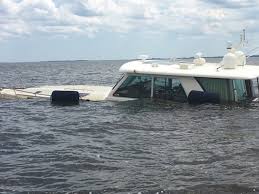
When faced with a sinking claim, the first question to address is, "What exactly does the insurance carrier mean?
Is a trawler sinking when sitting at the dock with water leaking in through the stuffing box at a rate the bilge pump can keep up with?
Is it sinking if the bilge pump can no longer keep up?
Is it sinking if the bilge pump fails? How about a ski boat that gets swamped by waves?
Or a boat with positive flotation awash to the gunwales?
From an insurance perspective, a boat is sinking if it must be actively pumped out to remain afloat and undamaged.
This definition highlights two key issues.
First, a sinking boat is not watertight. There is always a source of water that must be located and stopped to keep the boat floating.
The second is that well-designed boats do not sink due to failed bilge pumps. A boat should stay afloat in the conditions for which it was designed without water having to be pumped out of it — even in heavy rain and big seas (relative to the size of the boat).
That's not to say that adequately sized, functioning bilge pumps are not important. In addition to removing water, they can keep your boat afloat long enough for you to find a leak and fix it. But that time should be measured in minutes and hours, not days and weeks.
When it comes to gradual leaks due to slowly failing parts, too many of the boats in claim files existed in a state somewhere between floating and sinking, completely dependent upon the bilge pump to keep them on the water instead of below it. The bilge pump merely postponed the sinking until it failed, lost power, or was overwhelmed by the volume of water. Had someone fixed the leak in those days, weeks, or months, that boat would not have sunk.